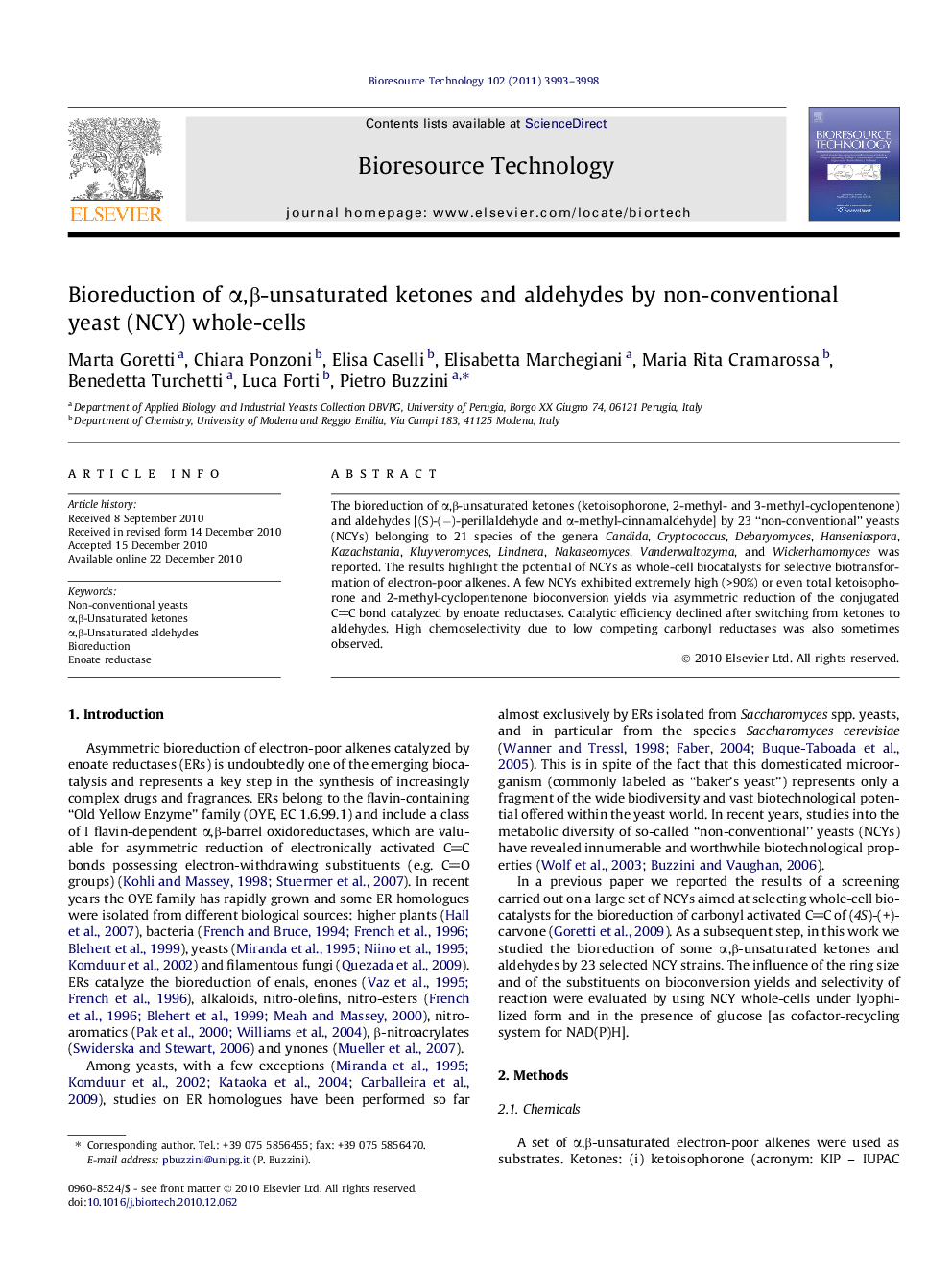| Article ID | Journal | Published Year | Pages | File Type |
|---|---|---|---|---|
| 10395236 | Bioresource Technology | 2011 | 6 Pages |
Abstract
The bioreduction of α,β-unsaturated ketones (ketoisophorone, 2-methyl- and 3-methyl-cyclopentenone) and aldehydes [(S)-(â)-perillaldehyde and α-methyl-cinnamaldehyde] by 23 “non-conventional” yeasts (NCYs) belonging to 21 species of the genera Candida, Cryptococcus, Debaryomyces, Hanseniaspora, Kazachstania, Kluyveromyces, Lindnera, Nakaseomyces, Vanderwaltozyma, and Wickerhamomyces was reported. The results highlight the potential of NCYs as whole-cell biocatalysts for selective biotransformation of electron-poor alkenes. A few NCYs exhibited extremely high (>90%) or even total ketoisophorone and 2-methyl-cyclopentenone bioconversion yields via asymmetric reduction of the conjugated CC bond catalyzed by enoate reductases. Catalytic efficiency declined after switching from ketones to aldehydes. High chemoselectivity due to low competing carbonyl reductases was also sometimes observed.
Keywords
Related Topics
Physical Sciences and Engineering
Chemical Engineering
Process Chemistry and Technology
Authors
Marta Goretti, Chiara Ponzoni, Elisa Caselli, Elisabetta Marchegiani, Maria Rita Cramarossa, Benedetta Turchetti, Luca Forti, Pietro Buzzini,
